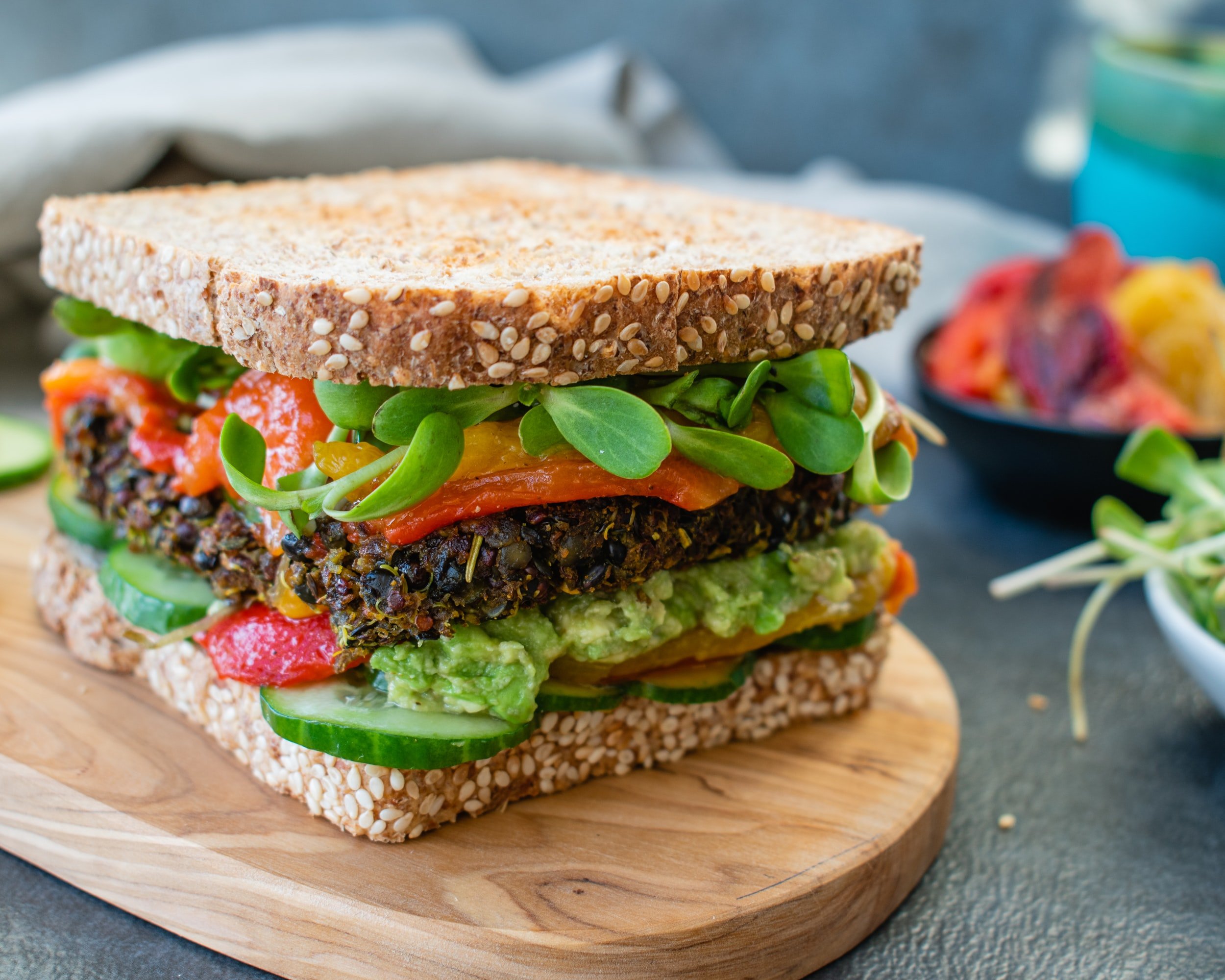Let’s talk about the squishy fix.
As silly as it may sound, nearly everyone I talk to about training or dieting is interested in mitigating their squishiness in favor of a harder-looking physique.
Some people call this the "skinny-fat dilemma," but to me it's more of a squishiness dilemma.
So what do you do if you're squishy and you don't like it?
Firstly, I think it's important to understand how we all get squishy in the first place because not everyone is in the same squishiness boat.
How do we get squishy in the first place?
Scenario 1: you were lean but let go.
Probably the most common route to squishy is what I would call the person who grew up thin or lean by nature and then let go at some point in life.
Some of you are probably nodding your heads and thinking, "Yep. That's me." You never really had to think about food as a young person because "your metabolism was awesome!" And now it's apparently less awesome because you're squishy?
Or maybe your food and exercise habits changed a bit along the way as well.
A lot of these people were athletes in high school or college and then lost their way in their twenties.
scenario 2: the long-time chubster
But there are also people who have never known life without their squishiness. This would be anyone who feels like they grew up as a "fat kid" or thinks of themselves as genetically cursed.
You've never really felt confident at the pool or on the beach. You've never loved your picture being taken and you've probably always been insecure about a t-shirt that's just a little too tight. Maybe you were even made fun of for your weight when you were younger.
For those who know me well, you know that I actually fall into this camp.
Scenario 3: The Freestyle Friday Protein-Deficient Cardio Crowd
This third camp is probably the one that gives me the most grief because it represents a group of people who are trying really hard in all of the wrong ways.
And usually, pervasive ignorance is a common denominator among these people.
I know that sounds terrible, but I plan to defend what I mean by that as gently as possible. I call this group the Freestyle Friday Protein-Deficient Cardio Crowd.
Let me break that one down for you.
Freestyle Friday is a term my high school basketball coach used to talk about anything that wasn't designed for a specific goal in mind. In short, it's something random and it implies little to no consideration of the future. With these people, I find that there's usually no method to their madness. They just "do" a bunch of stuff, and it's never systematic enough to warrant any meaningful or predictable returns.
Protein-Deficient is pretty self-explanatory. Even though I've shifted my focus away from ultra-high-protein diets in recent years, you still have to consume an adequate amount of protein for any semi-serious physique endeavor.
If you want a deeper dive on calculating your own protein needs, check out this article I personally wrote on the topic.
You can also check this article out for practical tips on how to eat more protein if you don't know where to start.
Cardio Crowd simply refers to the fact that these people generally spend way more time doing cardio than they do getting stronger and lifting weights.
When these three forces combine, you're bound to find some degree of squishiness. You might be fit in the cardio sense! But you might be squishy too.
For a surprising example, check out this photo of David Beckham I found the other day.
I'm not saying the guy looks "bad," but it's definitely a softer look for an elite soccer player in a photoshoot setting.
In my experience, most people want to be both more muscular and leaner than his physique in this particular photo.
Why Most People Don’t Love Their Squishiness
This is simple. Squishiness usually implies the combination of two unappealing factors: little to no muscle mass and unwanted fat.
This is a problem because most people would rather be the opposite of at least one but ideally both of those factors!
In other words, having little no muscle while carrying extra body fat is kind of the worst case scenario for most people.
You'd probably prefer having the combination of muscle and fat or the combination of no muscle and no fat than being all around squishy.
For example, powerlifters can sometimes be a decent example of what it means to have plenty of muscle but also plenty of fat, but, as you can see here, this lifter has a ton of muscle and a very healthy and aesthetic amount of body fat.
On the other hand, long distance runners tend to be a decent example of what it means to have little to no muscle or fat.
It's kind of like preferring to have your favorite team be 1-1 instead of 0-2 going into the third week of the football season.
Why would you want anything other than everything?
So in short, people don't love their squishiness because it's a double-opposite of what most people want.
Although each of those camps would benefit from slightly different strategies, the baseline principles are going to be the same.
5 Steps to Fixing Squishy
Be warned, these fixes are not sexy, and you won’t see any mention of lemon juice solutions.
Step 1: set a specific goal.
Firstly, you need to decide if you're going to lose fat first or build muscle first.
You can always try for a nice, slow, and steady recomp, but I think most people would be smart to pick one road or the other and get going.
This decision is important because it dictates how many calories you will be consuming as you start your new program.
Step 2: REMEMBER THAT calories matter most.
Once you have a clear direction and a specific goal, you've got to take extreme ownership of your caloric intake.
Remember that there are only ever three ways to eat:
In a caloric deficit for a primary goal of fat loss
In a caloric surplus for a primary goal of muscle gain
At maintenance calories for a body recomposition effort
In any of these cases, I personally believe a modest approach will work best for most people.
In other words, I would recommend against any aggressive caloric deficit or caloric surplus, and I will tell you why.
Keep in mind that squishy or “skinny fat” people are typically visually softer and less muscular than they need to be for a hard-body look, which means…
Eating in an aggressive deficit is going to severely limit the muscle you can gain.
Eating in an aggressive surplus is going to cause excess weight gain and create an ever softer appearance.
As you can see, those are both unwanted outcomes.
So for some general advice, I think a 0-10% deficit or surplus depending on your goal is a very conservative place to start.
This means if your maintenance calories are 2,000 per day, you’d switch to an 1,800-calorie or 2,200-calorie diet depending on the goal (if you were to use the 10% figure).
STEp 3: make sure your protein intake is adequate.
You've got to get your protein in check.
Since so many people struggle to optimize their protein, I’m willing to throw out a few general recommendations.
I really think most females would benefit from targeting a minimum of 80g of protein per day while most males would benefit from targeting a minimum of 120g per day.
Obviously, you can eat much more than that if you personally feel you need to. That choice is yours. I'm just one guy yelling in a noisy room.
For a much more nuanced discussion on this, click here.
STEP 4: prioritize resistance training and progressive overload.
Train consistently with weights while minimizing unnecessary cardio.
You're just never going to develop succulent, balloon-like muscles that look impressive in your best outfits if you never train with weights.
I also realize it may sound a bit counterintuitive to minimize cardio, but you have to remember that building muscle is much more difficult than losing fat.
For that reason alone, I try to encourage people to commit to longer phases of muscle gain knowing in the back of their mind that cutting the fat later is always an option.
So if you're on the fence about training for muscle gain or dieting for fat loss, I might encourage you to train for muscle gain.
Some might argue it’s the less satisfying short-term move, but I firmly believe it’s the more gratifying long-term move.
You’re also going to want to make sure that your program is designed to allow for progressive overload, which means you’ll gradually be increasing the load, reps, or sets performed over time.
If you’re new to the idea of progressive overload, click here.
Step 5: diet in phases.
Diet phasically. I don't have the space to get into that here, but it's worth saying.
If you're squishy, you're probably not going to be able to do a single dieting phase and wake up lean and muscle-puffy someday.
In other words, you might start with an 6-week body recomposition effort at maintenance calories while optimizing your training quality and then deload for a week before jumping into a small surplus to start burning away some of the unwanted fat that’s preventing you from looking trimmer.
It might even take multiple phases of manipulating your strategy, which is where I personally think having a body recomposition coach can be extremely helpful.
Special Considerations
If you used to be lean but you've let go, there's a good chance you can "get your old self back" simply by getting back to old habits.
It's also most likely that you can go straight to cutting body fat since you might have some lingering muscle from your leaner days as a high school athlete or something similar.
If that’s you, it would certainly be my recommendation to start eating in a small deficit of around 10%.
For anyone who feels like they're bigger by nature, you might have to make a more dramatic shift than our leaner friends. But in my opinion, it's better to face the facts and get to work than it is to mope over the unfairness of genetic predispositions.
And I'm allowed to say that since I grew up "husky."
If your metabolism seems to be in a decent place, you're probably best to start chipping away at body fat and then building muscle once you get to a leaner base. Also, don't expect it to be easy. You might have to be more meticulous with your diet than the naturally thin girl at your office you secretly despise.
For these people, I would also recommend a small deficit of around 10%.
For the FFPDCC, you're in a bit of a pickle but it's not void of all hope. It's a hopeful pickle.
But you probably need to decide if you care more about being a cardio monster or a Greek statue. They just really don't go hand in hand in any optimal sense.
If you're more about cardio, then a lower-protein life makes good sense. You're not actually trying to build muscle and that's fine!
But if you're sick of squishy more than anything, get on a structured weight training program, bump your protein intake, and snooze the cardio for a few months to give yourself a chance to build some lean tissue.
For these people, I would actually recommend maintenance eating or a small surplus of around 10%.
And that's that!
Just some thoughts on being squishy and how to rewrite your story if you're in pursuit of leaner and more muscular body composition.
Thanks for reading! I genuinely hope you were able to take something meaningful away from this article.
If you feel like it brought you any value at all, consider sending it to a friend or family member - especially someone who might be tired of having their love handles melt over the sides of their favorite jeans.
Later, guys.
-Andrew


























